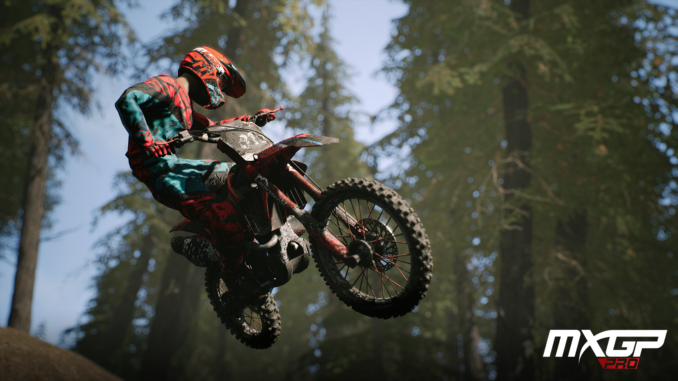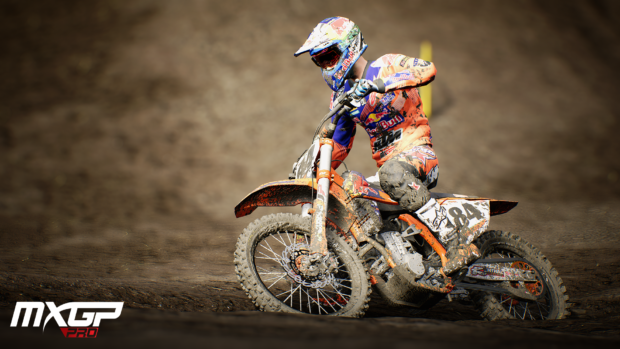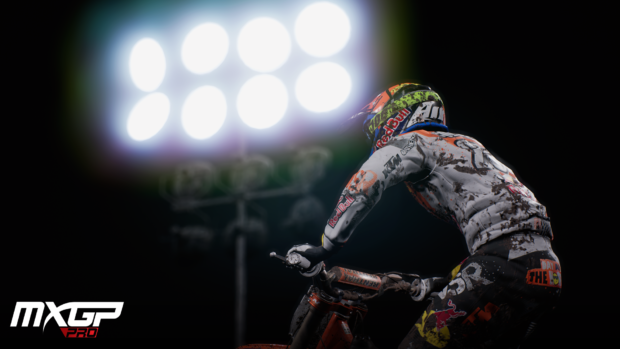
 When a game touts ultra-realistic gameplay and simulator like performance, it’s imperative that the mechanics of riding are just that; Ultra-realistic. While isn’t quite an arcade racer, it is certainly much more enjoyable to a casual audience rather than the hardcore fans that simulators tend to attract.
When a game touts ultra-realistic gameplay and simulator like performance, it’s imperative that the mechanics of riding are just that; Ultra-realistic. While isn’t quite an arcade racer, it is certainly much more enjoyable to a casual audience rather than the hardcore fans that simulators tend to attract.That’s not to say the MXGP Pro is a mediocre game. It is most definitely an enjoyable experience. It achieves the most significant goal that any game strives for; to be fun. Flying through the air at 75KPH and overtaking the rider in front of you around a tight corner is a satisfying experience. Graphics are pretty, making great use of Unreal Engine 4’s superior lighting effects. Sound design is on point. The roar of the engine before releasing the handbrake and speeding off, the sound of leaves whizzing past your head, or even the thud of a poorly executed landing are all top-notch. The game has all the bells and whistles.
Where MXGP Pro starts to falter is once you stop looking at it as a game, and start looking at it as what it’s intended to be: a simulator. In real MotoX races, riders have to take into account every action they take. Even the slightest missteps can ruin their race. Overshift your weight while landing and you’re most certainly going to lose time, if not crash. Jump angle, speed, pitch, and so much more all come into consideration for pro-MX racers. But that’s not the case for MXGP Pro. That is until you turn on “pro physics.”
Usually, the option of making physics more unforgiving would be perfect in a racing simulator. However, in this case, pro physics are a buggy mess. Controls go from casual to impossible with the flip of a switch. The bike becomes nearly uncontrollable. Any rut in the dirt becomes immediately unsafe to ride over lest you instantly going down and taking whoever is nearest with you. The fun and unique mechanic of controlling your weight in the air for more efficient jumps becomes super touchy and nearly impossible to execute correctly. The most annoying offender though is the AI. AI goes from somewhat competent instantly to Motocross Champion. They tear through turns, navigate jumps, and hit the throttle, all without a care in the world. It seems as if the pro physics only apply to the player, and not the AI opponents.
Online Multiplayer is best left neglected. Peer-to-peer hosting is a relic of the past that is best left that way. Poorly optimized netcode and hosts with high ping make the multiplayer experience wholly unenjoyable. Players lag their way through races while the host blows by everyone. For a game that requires such precise inputs, dedicated servers and solid netcode are a necessity.

MXGP Pro is significantly better when played as a light-hearted casual Motocross racing game to enjoy when you don’t want to overthink, and want to enjoy the exhilarating feeling of flying through the air on a dirtbike. Taking it too seriously reveals the underlying issues all too quickly. Unfortunately, Milestone Games has dropped the ball in making an ultra-realistic MX simulator but instead has succeeded in creating a fun, casual Motocross racer.
The Pros:Â
Casual Fun: MXGP Pro is at its best when played from a relaxed, lighthearted mentality. Players focusing on the excitement of MX rather than the technicality of it will have a much better time.
The Cons:Â
It’s Still a Sim: At the end of the day, the game is supposed to be a racing simulator, boasting realistic physics. It fails to implement these physics well, much to the chagrin of hardcore fans, and MX purists alike.
Final Thoughts:Â
If the devs spent more time on catering to their core fanbase and making a competent simulator and a little less on making the game so pretty, MXGP Pro would have benefited overall. It’s easy to slap a coat of paint on an old car and make it pretty. It’s much harder to fine tune that car to peak performance, and that’s what this game needed.


Leave a Reply